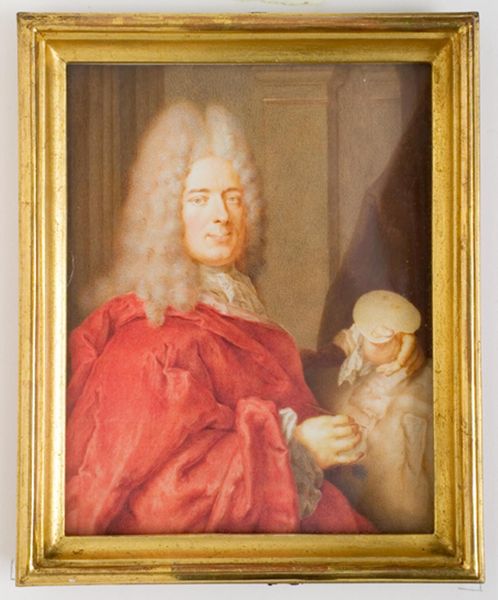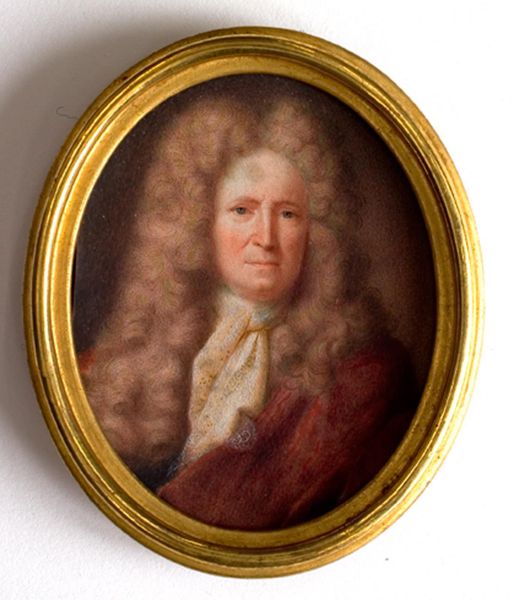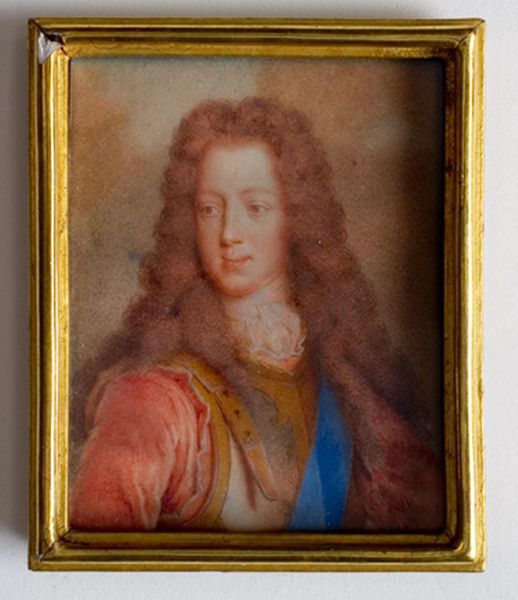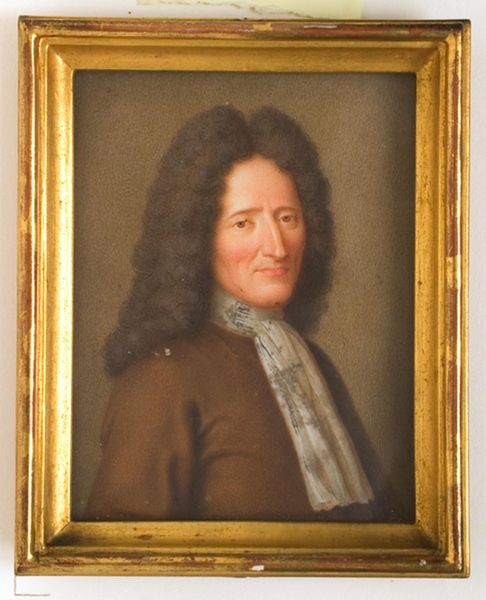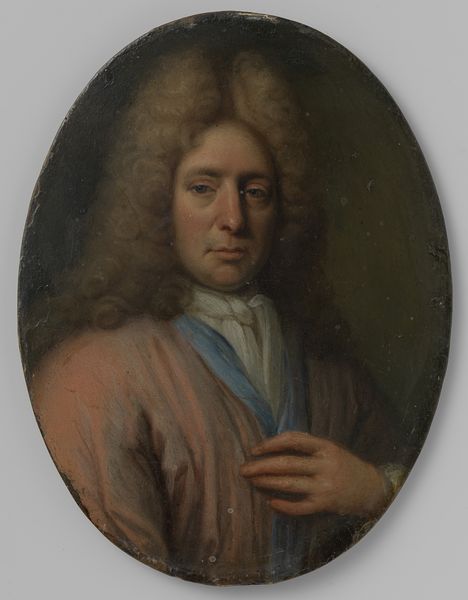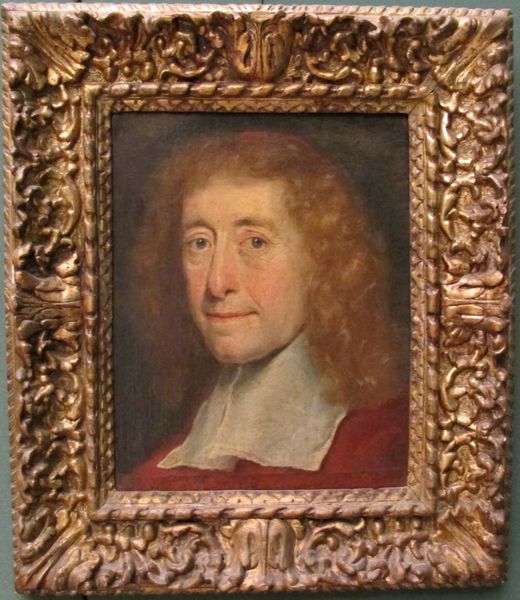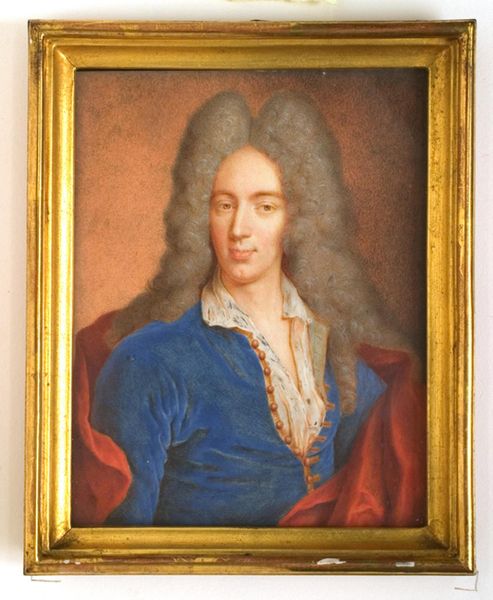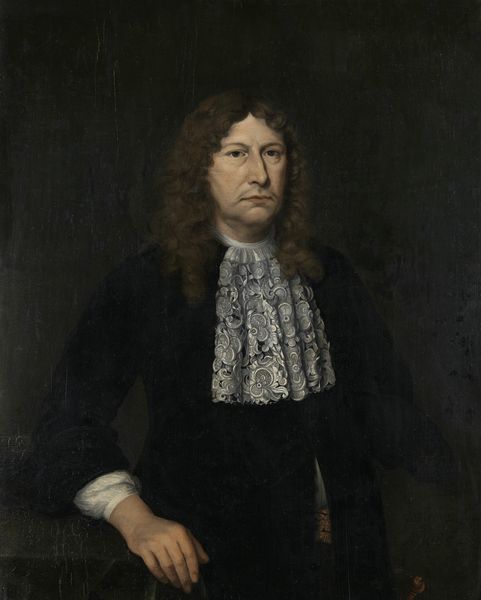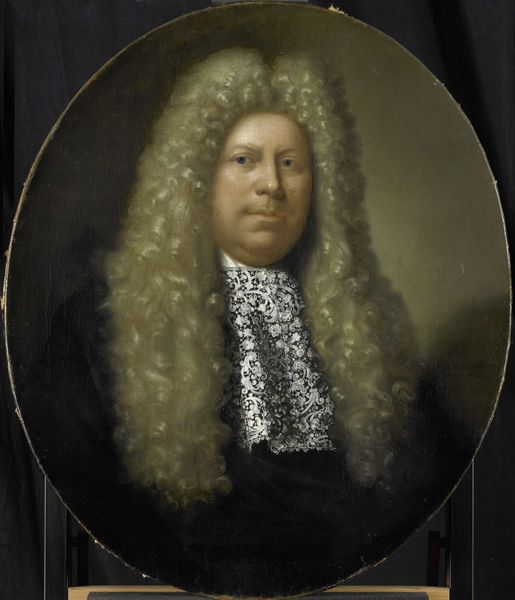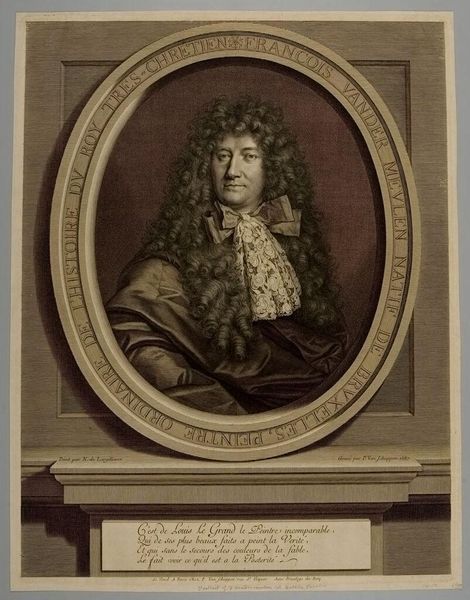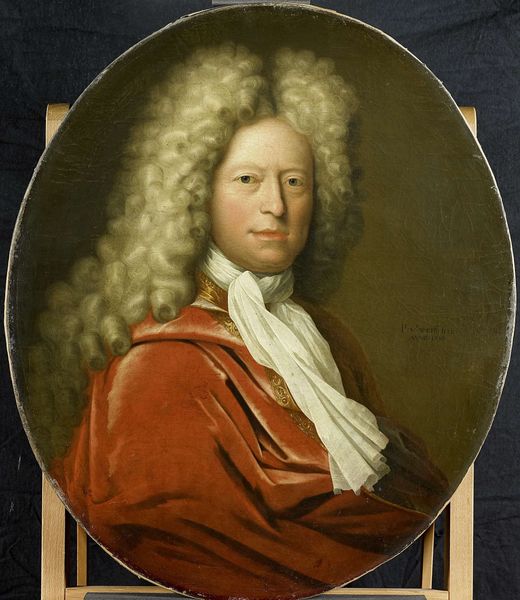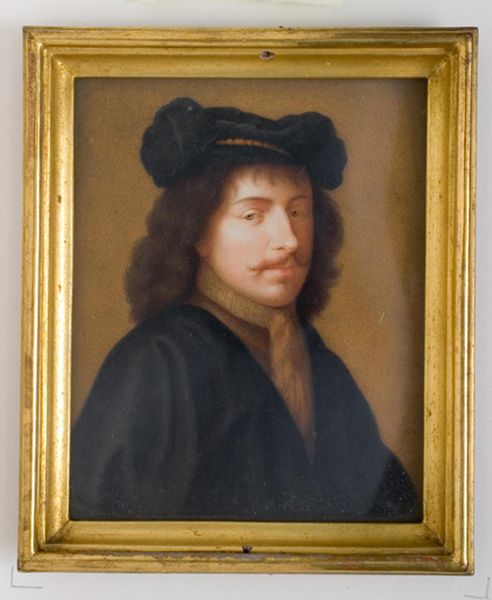
painting, oil-paint
#
portrait
#
baroque
#
painting
#
oil-paint
#
oil painting
#
portrait reference
#
portrait art
Dimensions: 11.5 cm (height) x 8.8 cm (width) (Netto)
Curator: Welcome to Statens Museum for Kunst. Today, we'll be discussing David Gardelle’s "Man’s Portrait in a Red Cape," estimated to be from around 1726-1748. A fine example of baroque portraiture. Editor: It strikes me immediately with its soft, almost velvety texture. The rendering of the fabric in the red cape, clearly achieved with oil paints, begs to be touched, almost suggesting the weight of it. Curator: Indeed. Gardelle worked within a context of evolving social hierarchies where portraiture served to solidify status and commemorate identity. These were luxury items that often signalled power within burgeoning mercantilist economies. Editor: Absolutely. And think about the pigments. That rich red likely came from sources like cochineal. It reflects a complex supply chain, dependent on labour extraction far from European artistic circles and its intended viewers. How far did that cochineal travel, at what cost? Curator: A good point. There's also an element of idealization at play. The sitter, despite perhaps advanced age, is presented with a smooth complexion and an air of quiet confidence. But in the public sphere of his own context, such presentations became less acceptable with new naturalistic conventions arising from academic traditions, Editor: Yet, even idealized, that’s clearly a skilled application of materials; look at the layering and blending around the eyes. The painting suggests that mastery of the craft was also part of expressing wealth or authority – one commissions a practiced hand to produce such a visage. It’s also just really lovely. The texture, particularly on the cloak, makes you want to reach out and touch it. Curator: It reflects how portraits played into creating personal brands, if you will, a way for the influential to curate their presence for generations. In time, the increasing scale of industrial economies altered taste cultures and created conditions under which works like these came to feel distant or antiquated. Editor: Well, despite changing taste cultures, that red cape speaks volumes, doesn’t it? Considering where these pigments and materials actually came from forces you to reckon with the complexities of class, production, and artmaking as we find it. Curator: A potent reminder of the art's intersection with political economy. Thank you for your insight.
Comments
No comments
Be the first to comment and join the conversation on the ultimate creative platform.


